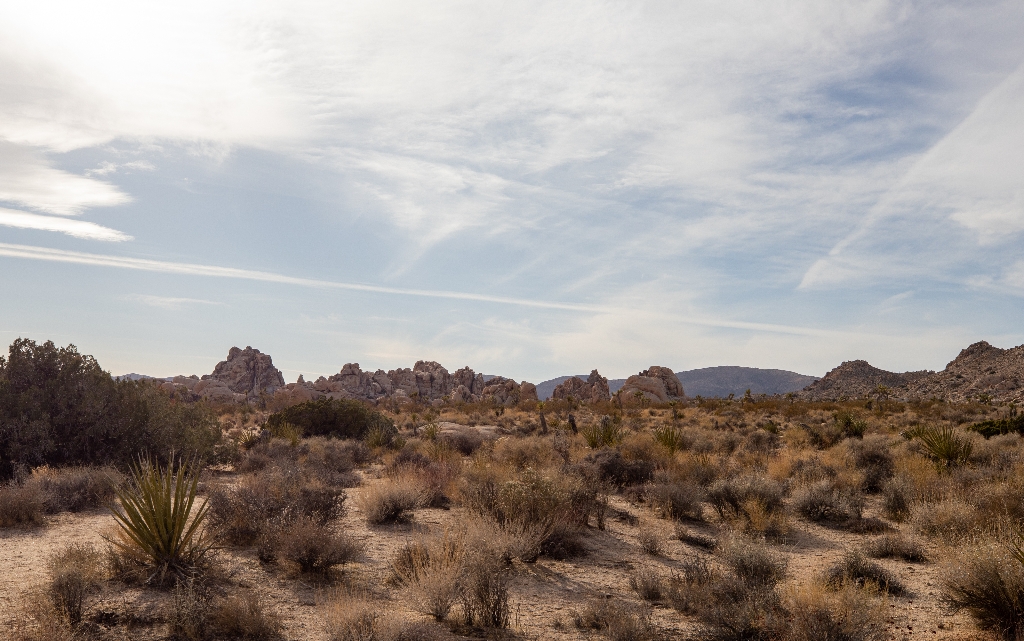
An Island Getaway
The large boulder piles of light-colored rocks that pop up from the flat plains are inselbergs, meaning “island hill” in German; they speckle the landscape like islands speckle an ocean. Inselbergs are the core of ancient hills, and they are revealed when the soil above them weathers and erodes away. The inselbergs remain while the other substances erode away around them because they are stronger and more durable.
The Island Life
Humans: Strong, durable rock in Joshua Tree attracts rock climbers. The rocks around you have hundreds of climbing routes. Climbers from all over the world come to Joshua Tree to climb these inselbergs.
Raptors: Predatory birds perch and nest near the high peaks of these rocks. From the pinnacles, raptors can search for prey running through the valley floors all around. This area is often closed to climbing in the spring and summer to protect the park’s nesting raptors. Climbers should check climbing closures on the park website before climbing.
Vegetation: Water is a valuable commodity in the desert. When rain lands on inselbergs, it runs off to areas at the base of the rock adding additional moisture to the soil. The inselberg also shields some of the soil at its base from the sun, especially on the north side. The addition of water and shade in the desert creates unique microclimates that allow certain plant species to thrive.
Glossary
Inselberg: Isolated terrain that abruptly rises above the surrounding area. Inselbergs can be rock formations, hills, ridges, or small mountains.
Erosion: A geological process in which natural forces such as wind or water move natural materials like rocks, dirt, and sand.
Microclimate: The climate of a small, specific area that differs from the climate of the surrounding area.
Weathering: A natural process when water, wind, heat, plants and other forces, slowly break or change the rock.
Is there something we missed for this itinerary?
Itineraries across USA


















































